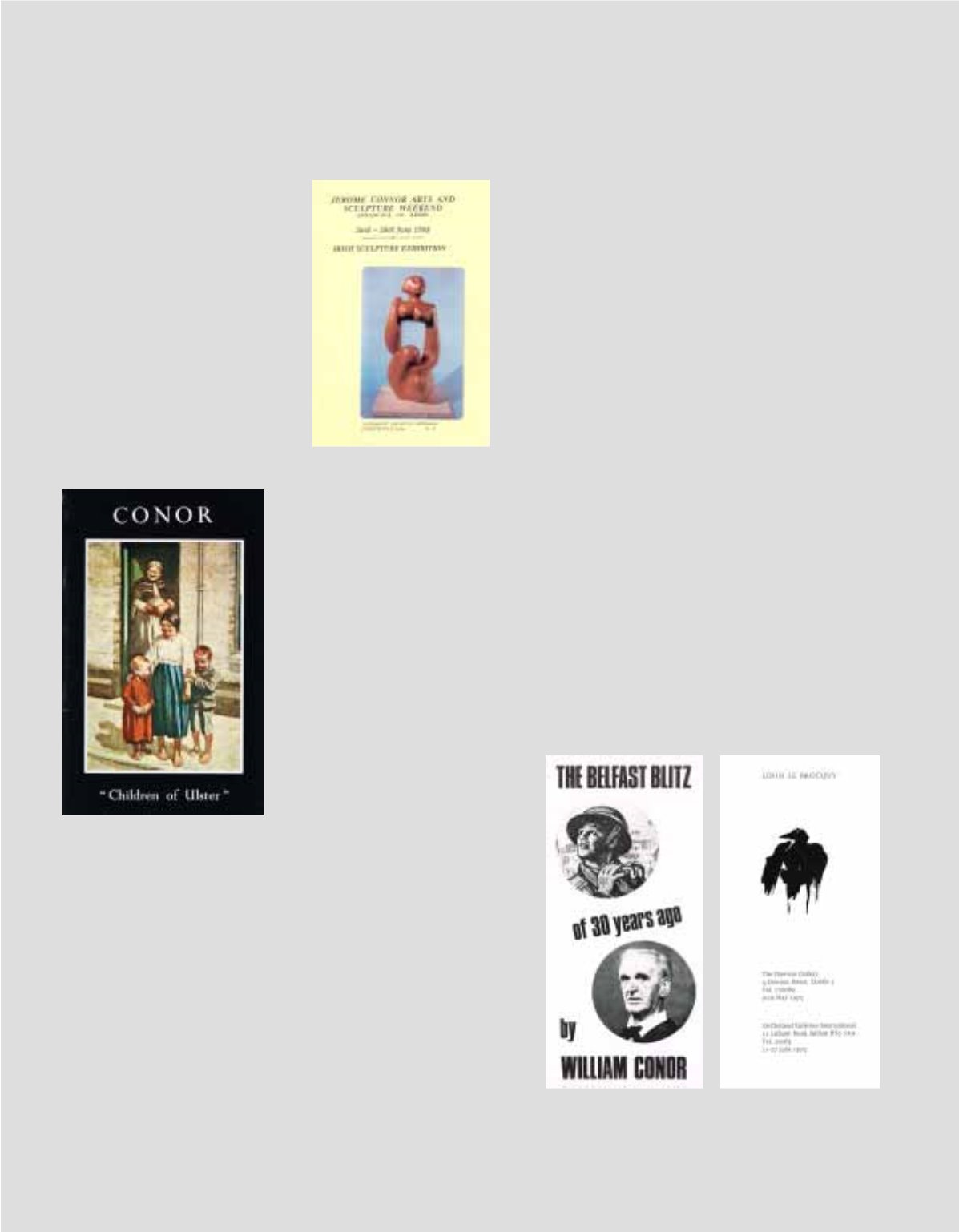

WHYTES
SINCE 1783
,
swathes of it. Artists from
Northern Ireland, from
John Lavery,William Conor
and Grace and Paul Henry
to Gerard Dillon and Dan
O’Neill were well
represented but so also
were southern Irish artists
such as Jack B. Yeats, Louis
le Brocquy, Mary Swanzy
and William Leech, while
the English artist Elizabeth
Rivers, who had spent most
of her working life in
Ireland, was a special
favourite.
George was an art dealer, but
while his canny business skills
were essential to support his
collecting, his passion lay in
assembling one of the finest
groupings of work by the
most important artists in
twentieth century Ireland. His
origins were humble.
Although born in Donegal, he
grew up in Omagh in a
working class environment,
gave up school at fourteen
because of his debilitating
dyslexia, but through
intelligence and doggedness
he became a police detective.
He became an art and
antiques dealer by accident.
Deciding to emigrate to Australia with his growing
family, he held a sale of his house contents in December
1966, and it was the success of this sale that prompted
him to change plans and to become a dealer instead (he
had been collecting since childhood). From 1966 to
1974, in Belfast, during some of the worst of the
Troubles, from a small shop on May Street, and later
from the more prestigious surroundings of McClelland
Galleries International on the Lisburn Road, he ran a
thriving business. He used the sale of precious silver, fine
furniture and antique glass to support his real passion –
Irish painting, - and to enable him to put on solo
exhibitions of key Irish artists until he was forced give
them up following the bombing of adjacent premises
and death threats. The McClellands moved to Dublin,
where George attended NCAD (1974 -77) as a mature
student and steered himself towards life as an artist.
That dream (encouraged by his successful participation
in the IELA exhibition in 1978) was interrupted by a
meeting with FE McWilliam and William Scott who
persuaded him to visit Tony O’Malley’s studio in
Cornwall.
George became O’Malley’s agent and, for the two years
of their relationship, he devised a master plan which
successfully lifted O’Malley’s career from unknown and
struggling to the very forefront of Irish art in the 1980s.
Although O’Malley was too much of a free spirit to
accept the straight-jacket of management by anyone,
his life changed forever and for the better as a result of
George’s agency. It reminded George of what he did
best, buying and selling art. From their house in Taney,
Dublin; Kerry, where he and Maura spent much of their
time, or their London apartment, the McClellands
continued to promote Irish artists, George professionally
and Maura, through her wonderful hospitality and
warmth. Their collection seemed in-exhaustible, despite
their 2003 sale and gifts to IMMA. Their deaths, which
have given rise to this sale, were a sad loss for Irish art.
The sale gives another chance to see some of the
artworks, notably the Conor’s, Middleton’s, le Brocquy’s
and O’Malley’s that played such a valuable role in the
early development of IMMA.
Catherine Marshall
August 2016
IRISH & INTERNATIONAL ART · 26 SEPTEMBER 2016 AT 6PM 7
Matriarch, 1935 by F.E.
McWilliam (lot 50) illustrated on
exhibition catalogue cover for
the 1998 'Irish Sculpture
Exhibition', Annascaul, Co. Kerry
Exhibition catalogue:
‘Children of Ulster’ by William
Conor held at McClelland
Galleries, Belfast, 1969
Exhibition catalogue: ‘The
Belfast Blitz of 30 Years Ago
by William Conor’ held at
McClelland Galleries,
Belfast, 1971
Exhibition catalogue: ‘Louis
le Brocquy’ held at The
Dawson Gallery, Dublin and
the McClelland Galleries
International, Belfast, 1973


















